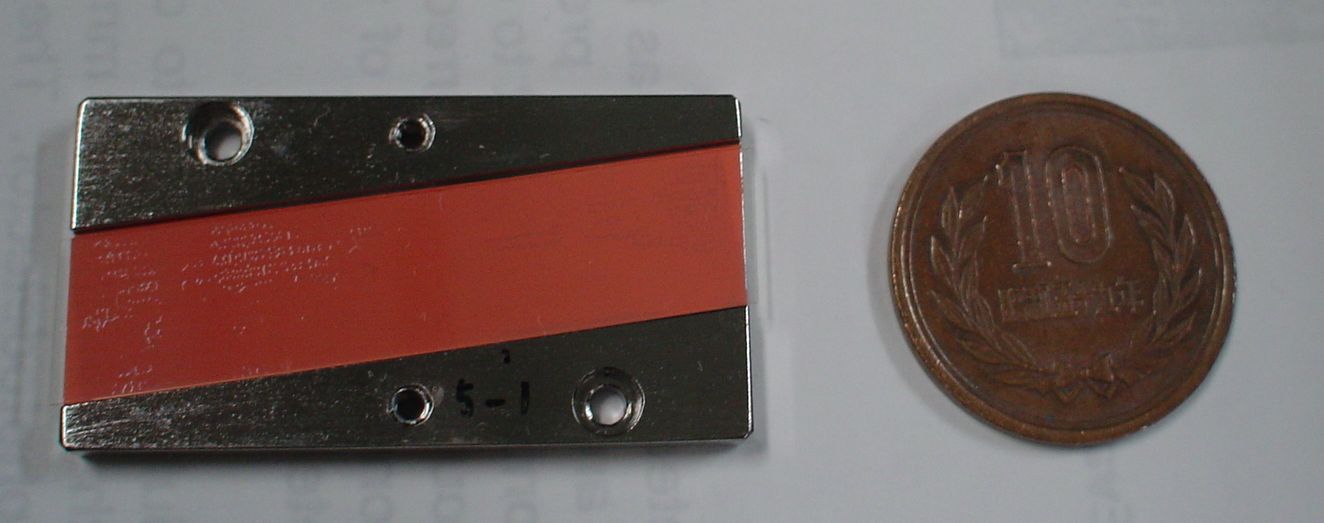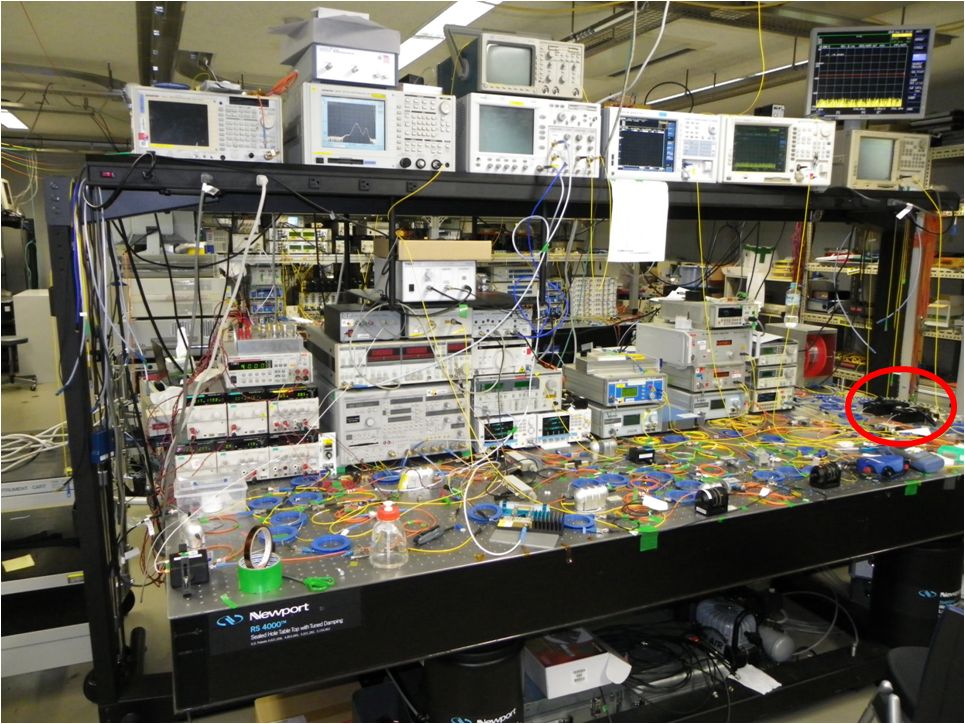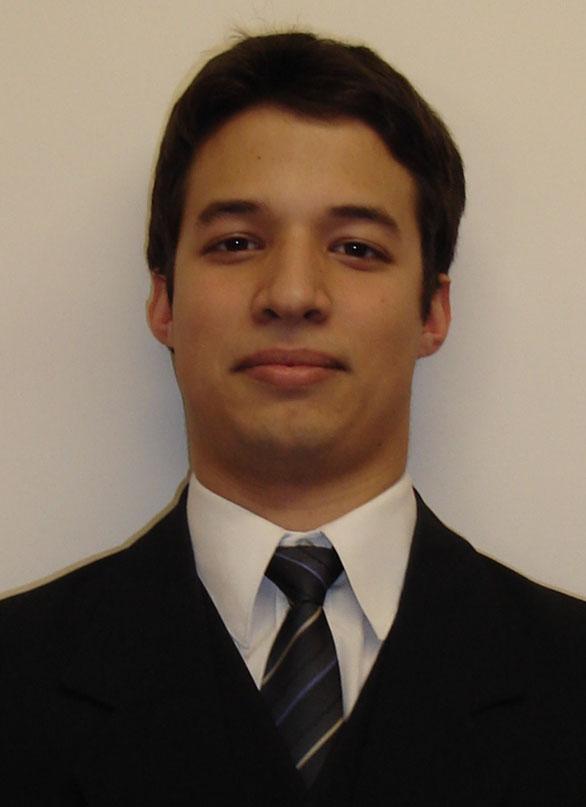 |
BMe Research Grant |

|
Doctoral School of Electrical Engineering
Dept. of Telecommunications and Media Informatics
Supervisor: Dr. Tibor Cinkler
Study of Optical Phase Regenerators
Introducing the research area
Fiber-optic systems play a major role in modern telecommunication. With the evolution of technology, transmitting data by light phase modulation instead of simple on-off keying has become possible. As this method gives much better results in terms of transmission speed and quality, it is quickly spreading throughout the industry. To deploy and operate large (metropolitan, national, international) networks, regenerators (signal repeaters) operating at tens of terabits per second should be included. Unfortunately, they are large and consume high power. The aim of my research is to find an all-optical way of regenerating signal phase that enables developing power and space saving phase regenerators that are potentially simpler and cheaper than the current ones. My first results were published in the 2010
application and a significant progress has been attained over the past year.
Brief introduction of the research place
I conduct my researches at the
High Speed Network Laboratory (HSNLab) of the Department of Telecommunications and Media Informatics (TMIT) as PhD student. I spent 8 months on an exchange program at the National
Institute of Information and Communications Technology, Tokyo in Jan-Sep 2010
in the frame of the cooperation with TMIT. This gave me the opportunity to work
in one of the world's leading fiber-optics laboratories.
History and context of the research
I started working in the field of fiber-optics as a second year student (single level system) in 2005. In 2006, I entered a scientific competition (TDK) with my work on nonlinear optical phenomena which was awarded first prize at both university and national levels. In the next years I reached similar results (see references). Having gained experience in nonlinear optics, I chose intensity regenerators as the topic for my graduation, and then started focusing on phase regenerators. With the onset of novel modulation formats, we are witnessing importance of this functionality rapidly growing, however, its research is still at an initial stage. As for now, the most promising candidates for this purpose are phase sensitive amplifiers; the first real regenerative setup operating on this principle was introduced as late as this spring (2010) [11]. Its design is based on a highly nonlinear optical fiber, which inherently has large size and low integrate ability. Now my goal is to realize the same functionality in PPLN (Periodically Poled Lithium Niobate), a special nonlinear crystal that allows smaller size, better integrate ability and stability than that of the nonlinear fibers. Until recently, the physics of PPLN-based phase sensitive amplifiers is hardly present in scientific publications.

Dimensions of a PPLN compared to a coin: 50 parallel waveguides are integrated on the same chip (red)
The research goal, open questions
My research work covers two separate areas. In my device level studies, the main question is whether an efficient phase regenerator can be built with PPLNs and what advantages it has over the conventional, fiber-based amplifiers. Based on published theories, the operation is presumable feasible and efficient but no real regeneration experiments have been reported so far. Current optical systems use up to one hundred parallel wavelength channels for transmission. These must be separated before the electronic processing, however, a phase sensitive amplifier can handle all of them simultaneously, which results in a great advantage in terms of price and complexity.
The second research area includes determination of efficiency that is expected from regenerators, their proper locations to be installed to and other parameters that affect network performance as function of the system configuration. No papers have been published in this area up until now. My first results showed that even phenomena that are usually neglected can play an important role in these complex processes [9,11].
Methodology
At NICT's laboratory, we conducted the experiments together with Dr. Ben Puttnam. The collaboration continued after my arrival back to Hungary as well, supporting the laboratory experiments with mathematical models developed at the BME. Availability of models and related experiments enabled us mutual validation of results, easing understanding of underlying physical processes in the crystal.
I am implementing a simulator in Matlab based on differential equations driving optical propagation to avoid possible errors in commercially available simulator software. Although models for phase sensitive amplifiers could be used in network level simulations as well, now they are considered more of an additional support for the experiments and a bridge between the simplified model and experiments. As these physical models have relatively high runtime and excess accuracy, I am not planning to use them in network simulations.
In my previous work on optical intensity
regeneration I used simplified regenerator models for analyzing long regenerator
chains. Based on this experience I was able to derive a simplified mathematical
model for phase sensitive amplifiers, which made possible the mathematical
evaluation of chains of phase sensitive amplifiers with various efficiencies.
This model is best suited for complex network-level simulations.
Results
Experimental results: The first measurements showed a phase sensitive gain one order of magnitude higher (15 dB) than the best data published so far (to our best knowledge). In
the next step we managed to experimentally regenerate phase-modulated signals
[15].

Signal regeneration through phase-sensitive amplification (constellation and eye diagram). Left side: noisy signal, right side: clean signal [15]
The last step towards realizing black box phase regenerators is the restoration of the original optical carrier. In the previous experiments we added this externally to the system, which is a common simplification. However, in practical systems this is not feasible. Theoretically and experimentally we have already managed to prove the feasibility of this intermediate step, and experimental verification is underway.
Simulation results: I investigated noise accumulation in multi-regenerator transmission line through Matlab-simulations. Placing phase and intensity regenerators of various efficiency along the fiber, signal quality was investigated. A new phenomenon was also recognized and documented: signal quality can often largely increase when applying minimal intensity regeneration to the system together with the straightforward phase regeneration. The phenomenon is largely dependent on the dispersion of the fiber. I studied this relationship in detail [9].

The experimental
set-up
Expected impact and further research
In my research, I study all-optical regenerators for restoring signal quality which, in my opinion, will be a key component of future optical networks. In addition to their basic functionality, I also focus on practical issues like size and price. To get a full picture of the problem, I extended my experiments with network and device level simulations. My long term goal is the experimental realization of a multi-wavelength PPLN-based regenerator and the development of a general simulation model. Below you can find my publications on regeneration and nonlinear optics.
Publications, references
-
Dániel Mazroa (2007). Determining the Optimal Signal Levels in Optical Fibers (in Hungarian). TDK Competition, BME-VIK 2006, I. Prize, OTDK 2007 I. Prize
-
Dániel Mazroa (2007). Optimizing 10 Gbps DWDM Networks as a Function of Non-Linear Effects Created in Optical Fibers (in Hungarian). TDK Competition, BME-VIK 2007, II. Prize
-
Dániel Mazroa (2007). Feasibility Study of High-Speed Data Transfer with Multi-Modal Optical Fibers (in Hungarian). TDK Competition, BME-VIK 2007, I. Prize, OTDK 2009, III. Prize
-
Dániel Mazroa, Szilárd Zsigmond (2007). Determining the Maximum Optical Signal Level in DWDM Systems (in Hungarian). Híradástechnika, June, 2007, pp. 26–33.
-
Dániel Mazroa, Szilárd Zsigmond, Tibor Cinkler (2008). Determining the Maximum Power Level in Optical Fibers, BONE Summer School 2008
-
Dániel Mazroa (2008). Simulation and Measurement of Optical Regenerators Implemented with Semiconductor Optical Amplifiers (in Hungarian). TDK Competition, BME-VIK 2008, II. Prize
-
Dániel Mazroa, Szilárd Zsigmond, Tibor Cinkler (2008). Determining the Maximum Signal Power in 10 Gbps WDM Optical Networks. Photonic Network Communications, Aug. 2008
-
Dániel Mazroa (2009). Simulation and Measurement of Optical Regenerators. BME-HTE Conference of Final Year Students, 2009, Best Paper Prize
-
Dániel Mazroa, Satoshi Shinada, Hideaki Furukawa, Szilárd Zsigmond, Tibor Cinkler, Naoya Wada (2010). Amplitude vs Phase Regeneration for BPSK Modulation Format. IEICE, Technical Meeting on Photonic Networks, Akita, June 2010
-
Szilárd Zsigmond, Dániel Mazroa, Hideaki Furukawa, Naoya Wada (2010). Limitation of Spectral Efficient Modulation Formats for Circuit and Packet Switched Networks. OECC, Sapporo, July 2010
-
Dániel Mazroa, Benjamin James Puttnam, Satoshi Shinada, Naoya Wada (2010). Large C-band Phase Sensitive Gain in a Periodically-Poled Lithium-Niobate Waveguide. OECC Sapporo, July 2010
-
Dániel Mazroa, Szilárd Zsigmond, Benjamin James Puttnam, Satoshi Shinada, Naoya Wada (2010). Optimal Regenerator Spacing in BPSK/DPSK Modulated All-Optical Networks. Bone Summer and Master School, Budapest, Sept. 2010
-
Benjamin James Puttnam, Dániel Mazroa, Satoshi Shinada, Wada, Naoya (2011). Towards Regeneration of BPSK Signals in Periodically-Poled Lithium-Niobate Waveguides. IEICE Technical Meeting on Photonic Networks, Osaka, Feb. 2011
-
Benjamin James Puttnam, Dániel Mazroa, Satoshi Shinada, Naoya Wada (2011). Large Phase Sensitive Gain in Periodically-Poled Lithium-Niobate with High Pump Power. Photonics Technology Letters, Apr. 2011
-
Benjamin James Puttnam, Dániel Mazroa, Satoshi Shinada, Naoya Wada (2011) Experimental Investigation of Phase Squeezing in a Non-Degenerate PSA Based on a PPLN Waveguide. ECOC, Geneva, Sept. 2011 (accepted for publication)
-
Benjamin James Puttnam, Guo-Wei Lu, Dániel Mazroa, Naoya Wada (2011). Evaluation of a Fiber-Optic Parametric Amplifier with Optical Feedback in Multi-Channel Dynamic Networks. OFC, Los Angeles, Mar 2011
-
Francesca Parmigiani, Radan Slavic, Joseph Kakande, Carl Lundström, Martin Sjödin, Peter Andrekson, Ruwan Weerasuriya, Stylianos Sygletos, Andrew D. Ellis, Lars Grüner‐Nielsen, D. Jakobsen, S. Herstrøm, Richard Phelan, James O’Gorman, Adonis Bogris, Dimitris Syvridis, Sonali Dasgupta, Periklis Petropoulos, David J. Richardson (2010). All‐Optical Phase Regeneration of 40 Gbps DPSK Signals in a Black‐Box Phase Sensitive Amplifier. OFC, San Diego, Mar 2010
